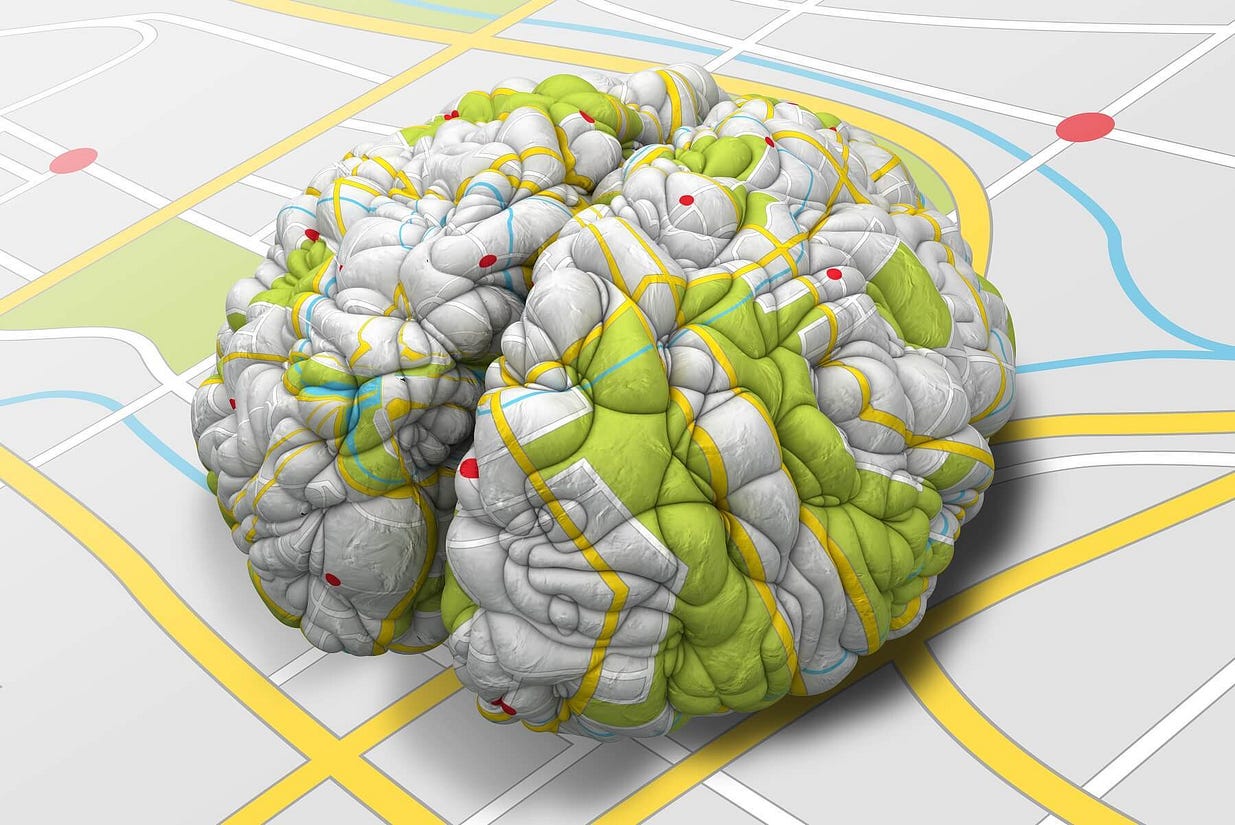Brain on GPS
Use it or lose it. Much talk about what will happen to our cognitive functions when we delegate them to various technologies. Let’s look at this on a concrete, already well–studied example — GPS navigation and its biological analog — spatial orientation.
Knowing where you are in space and building its mental models is one of the most important brain functions for survival. In 2014, scientists received the Nobel Prize for the description of certain types of neurons in the hippocampus, “place” and “grid” neurons (“grid cells” in the entorhinal cortex (next to the hippocampus). Our brain builds mental maps and calculates our routes. The rear part of the right hippocampus tracks changes in the number of available path options, the front pars records changes related to distance calculation.

However, we stopped using this skill with the advent of GPS navigation. Brain scans have shown that when we plan a route in imagination, our hippocampus is active, and when using a phone, there is no activity. We need training in active navigation and orientation to maintain the neural architecture. Disorientation (as well as a sense of humor) is one of the first signs of Alzheimer’s disease, and the skill of orientation is violated first. Interestingly, recording your walking and driving routes is an accurate biomarker and predictor of dementia development.
Studies show that those engaged in orienteering have a better memory and a lower risk of dementia. You train to navigate — you pump your brain. A famous study about London taxi drivers showed how the hippocampus’s size noticeably increases during the time of learning to drive on London streets without a navigator. In addition, spatial thinking is necessary for better assimilation of mathematics, for engineers, chemists, designers, programmers, and many other specialties.
What to do? Use it or lose it. Visual-spatial intelligence is one of the most important cognitive functions that help understand the world, especially in natural sciences and technologies. It is important to develop it in children and to support it in adults. Train spatial thinking: you can walk around the city and visit new places to remember the way, get out, and imagine routes. Visualize memory palaces for memorization. Travel in video games. Control the drone. Create a mental map of the place you visited. Plot routes of places where you are going. Actively explore the physical world: estimate the distance, and pay attention to roads, buildings, and routes. Try to walk different roads.
Orienteering experts report more proficient spatial processing and memory across adulthood. PLoS ONE 18(1): e0280435.
Navigation-related structural change in the hippocampi of taxi drivers March 14, 2000 97 (8) 4398–4403
Hippocampal and prefrontal processing of network topology to simulate the future Nature Communications volume 8, Article number: 14652 (2017)
GPS driving: a digital biomarker for preclinical Alzheimer disease
Spatial navigation and risk of cognitive impairment: prospective cohort study
Machine learning detects altered spatial navigation features in outdoor behaviour of Alzheimer’s disease patients Scientific Reports volume 12, Article number: 3160 (2022)
https://groups.psych.northwestern.edu/uttal/documents/UttalandCohen.pdf